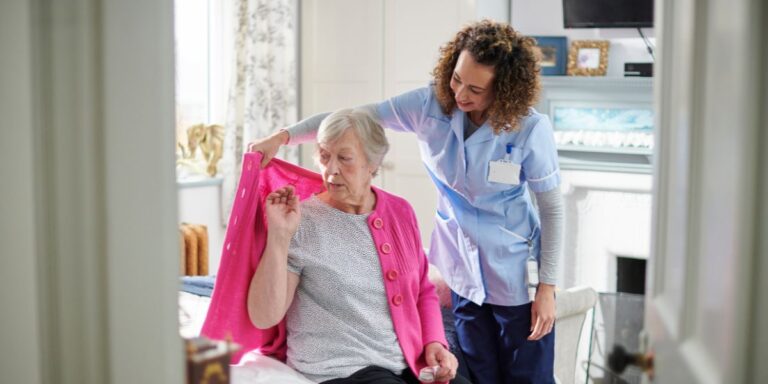Seclusion in health and social care refers to the supervised isolation of an individual, usually in mental health services, in a room or area in which they are prevented from leaving. Staff use seclusion to manage people’s behaviour if it has become a serious risk to others, or to themselves. The rules around seclusion are strict and strictly regulated in the UK, especially under the Mental Health Act 1983 and its Code of Practice.
Seclusion is only ever used as a last resort, after all other de-escalation methods have failed. This intervention targets preventing harm. People placed in seclusion are closely monitored by trained staff throughout.
What is the Purpose of Seclusion?
Seclusion serves a very defined purpose in clinical settings. It is neither punishment nor treatment. The main objective is to protect others, including staff and other patients, from harm while helping the person in crisis to regain control of their behaviour.
Situations that may result in seclusion include:
- Immediate risk of serious injury to others
- Persistent threats of violence after all other calming measures fail
- Unable to keep others safe with less restrictive interventions
Staff must record every use of seclusion, explaining why it was necessary and what alternative actions were tried.
Legal Framework Governing Seclusion
In England and Wales, seclusion is guided by the Mental Health Act 1983, particularly the Code of Practice. The law emphasises that staff should only use seclusion within defined circumstances. Each hospital or provider must have written guidelines based on national regulations.
The law requires:
- Seclusion is only used to manage severe behavioural disturbance that is likely to cause harm to others
- Continuous observation and regular reviews
- Staff record all details in the person’s notes
- Prompt involvement of senior clinical staff
Failure to follow legal standards can result in disciplinary action, regulatory penalties, and investigation by the Care Quality Commission (CQC).
Where Seclusion Happens
Seclusion takes place in designated rooms equipped for safety and monitoring. The environment should:
- Prevent self-harm and minimise risk
- Have furniture fixed to the floor (where necessary)
- Allow staff to observe the person at all times, ideally through an observation window
- Have access to toilet facilities
These rooms are different from ‘seclusion’ areas in schools or supported accommodation, which do not have a lawful basis for isolating adults unless risks are grave and immediate. In the NHS, seclusion rooms are designed by architects with safety in mind and regular checks are made.
How Seclusion Differs from Other Types of Isolation
It is easy to mix up seclusion with other restrictive measures like observation, time-out, or physical restraint. These interventions have distinct purposes. Here is how seclusion stands out:
- Physical restraint involves holding someone to prevent movement, often briefly
- Time-out (or withdrawal) removes someone from a situation but does not prevent them from leaving
- Enhanced observation means staff stay with someone at all times, but the person is not isolated
Seclusion, on the other hand, isolates someone and physically prevents them leaving a space, for a set time, to keep others safe.
The Risks of Seclusion
Seclusion presents several risks, both physical and psychological, for the individual and for staff. The act of forcibly isolating someone can be distressing and may lead to:
- Heightened anxiety and panic
- Feelings of humiliation or punishment
- Worsened mental state
- Physical health concerns (dehydration, lack of mobility, pressure sores)
Because of this, staff assess risks continually and keep the episode of seclusion as short as possible.
How Staff Decide When Seclusion is Necessary
Deciding to use seclusion is based on professional judgement and risk assessment. Staff follow policies and involve a senior nurse or doctor wherever possible.
Key considerations will include:
- Has the person tried to seriously harm others?
- Would less restrictive actions (verbal de-escalation, medication, change of setting) manage the risk?
- How has the person responded in similar situations in the past?
- Are there any factors underlying the behaviour (pain, fear, psychosis) that need to be addressed?
Staff aim to use the least restrictive intervention that keeps everyone safe.
What Happens During Seclusion
During seclusion, someone is placed in a seclusion room or area. The person is monitored constantly. Staff use observation windows or CCTV, and physically check on the person at set intervals. The team record behaviour, physical needs (hunger, thirst, toileting) and mental state. Any signs of distress, injury, or change in presentation are reported to the responsible clinician at once.
Key activities during seclusion:
- Continuous observation, either in person or using cameras
- Checking if the person needs food, water or the toilet
- Documenting reasons why seclusion is ongoing
- Reviewing the person’s state every fifteen minutes (sometimes more frequently)
- Applying care plans for physical health, mental state, and dignity
Seclusion only ends when staff agree it is safe for the individual to return to their usual setting.
Ending Seclusion
The main focus is to end seclusion as soon as it is safe. The clinician in charge decides when risk has reduced enough for a gradual or full reintroduction to communal areas.
Steps to ending seclusion include:
- Reviewing whether the person can keep themselves and others safe
- Sometimes allowing ‘open door seclusion’ as a step-down process — the door is left unlocked, but staff remain close by
- Discussing with the person what happened and offering support to process the experience
At all times, the person’s dignity and human rights remain a priority.
Who is Most Affected by Seclusion?
Seclusion can affect a variety of people, but it is most commonly used with:
- People with severe mental health conditions (for example, psychosis, mania, personality disorders)
- Young people in adolescent mental health services (very rarely)
- Individuals with learning disabilities or autism, where behaviour poses serious danger to others
Care teams give special attention to how seclusion can affect vulnerable groups, such as people from minority ethnic backgrounds or those with communication difficulties.
Seclusion and Human Rights
Human rights law (particularly the European Convention on Human Rights) restricts isolation practices. Article 3 bans treatment or punishment that is inhuman or degrading. Staff must justify every episode of seclusion, limiting its use to what is absolutely required to prevent harm.
Several organisations oversee seclusion practice in the UK:
- The Care Quality Commission (CQC) inspects hospitals and expects strict records and accountability
- Local authorities and advocacy services (such as Independent Mental Health Advocates, or IMHAs) check that individuals’ rights are protected
If seclusion is used outside legal or ethical boundaries, patients and their families can complain and seek independent review.
Alternatives to Seclusion
Services should always try other interventions before seclusion. A range of approaches can reduce the need for seclusion:
- Verbal de-escalation: Calm conversation and reassurance
- Sensory rooms: Providing calming lights, sounds, or tactile objects
- ‘Comfort rooms’ for people to withdraw safely, without locked doors
- Medication to reduce agitation or anxiety
Staff receive ongoing training in non-violent crisis intervention to keep people safe without restricting their freedom.
Support After Seclusion
Experiencing seclusion can cause trauma or distress. Good practice is for staff to offer post-incident support to everyone involved:
- Debriefing session to discuss feelings, what happened and why
- Opportunity to ask questions in plain English
- Review of the care plan to prevent future incidents
- Offering family members information or support if consent allows
Support is available for staff as well, acknowledging the emotional toll it can take.
Recording and Learning from Seclusion
Detailed records are kept for every seclusion episode. Hospitals and care providers use this data to review their practice regularly, asking important questions:
- Could seclusion have been avoided?
- Was every possible alternative tried first?
- Did the person receive the best care possible?
- Are rates of seclusion increasing, and why?
This information helps services improve over time, driving safer and more compassionate care.
Training Staff to Use Seclusion Safely
Staff working in mental health or learning disability services receive training in:
- Recognising warning signs of risk
- Communication and de-escalation skills
- How to use seclusion correctly and legally
- How to monitor and support someone during and after seclusion
Training is refreshed regularly, with legal updates and advice from experts.
Staff are taught to reflect on their own actions, biases, or triggers that might affect care.
Ethical Considerations Around Seclusion
Seclusion sits at the intersection of keeping people safe and respecting their freedom. Ethical practice means questioning the need for seclusion, seeking the person’s perspective, and being transparent.
Ethical concerns include:
- Is it genuinely in the person’s best interest?
- Are there cultural or communication needs affecting behaviour?
- Does it hurt or humiliate the person in any way?
- Are family or advocates informed?
Debate continues in health and social care around the best ways to protect everyone while upholding dignity.
Summary Points
Choosing to use seclusion is never taken lightly in health and social care. Staff balance safety with compassion, clear policies and constant self-scrutiny.
Subscribe to Newsletter
Get the latest news and updates from Care Learning and be first to know about our free courses when they launch.







